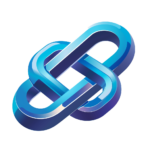
Automated Design Iteration with AI for Optimal Results
Discover AI-driven design workflows for automated iteration and optimization from initial concepts to continuous improvement for superior product design
Category: AI Design Tools
Industry: Product Design
Automated Design Iteration and Optimization
1. Initial Design Concept
1.1 Define Objectives
Identify the primary goals and requirements for the product design, including target audience, functionality, and aesthetic preferences.
1.2 Create Initial Design
Utilize AI-driven design tools such as Adobe Sensei or Canva’s Magic Resize to generate initial design concepts based on the defined objectives.
2. AI-Driven Design Analysis
2.1 Data Collection
Gather user feedback, market trends, and performance data from previous designs using tools like Google Analytics and user surveys.
2.2 AI Analysis
Implement AI algorithms to analyze the collected data. Tools like Figma’s AI features or Sketch2Code can convert sketches into high-fidelity prototypes and assess design effectiveness.
3. Design Iteration
3.1 Generate Variations
Use generative design tools such as Autodesk Fusion 360 to create multiple design variations based on the analysis results.
3.2 A/B Testing
Conduct A/B testing of the design variations using platforms like Optimizely to evaluate user engagement and preferences.
4. Optimization
4.1 Performance Metrics Evaluation
Analyze the performance metrics from A/B testing to identify the most effective design elements.
4.2 AI-Driven Recommendations
Leverage AI tools like The Grid or Design.ai to receive recommendations for optimizing design elements based on user interaction data.
5. Final Design Implementation
5.1 Finalize Design
Incorporate the optimized elements into the final design using collaborative tools like InVision or Adobe XD.
5.2 Stakeholder Review
Present the final design to stakeholders for approval, utilizing presentation tools that can integrate design prototypes, such as Figma or Miro.
6. Continuous Improvement
6.1 Post-Launch Monitoring
After implementation, continuously monitor user feedback and performance metrics using analytics tools to identify areas for further improvement.
6.2 Iterative Updates
Schedule regular design updates based on ongoing analysis, utilizing AI tools to streamline the iteration process and enhance product design continuously.
Keyword: AI driven design optimization
